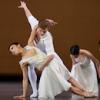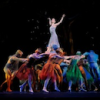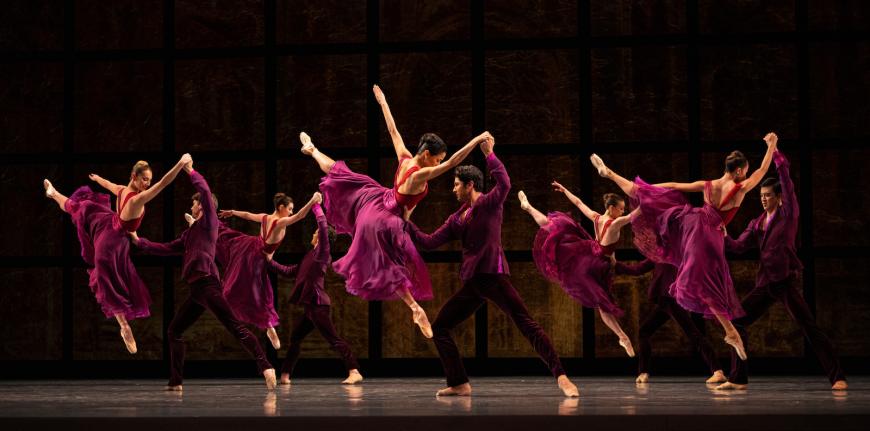
To borrow a phrase from Simon and Garfunkel: “And here’s to you,” San Francisco Ballet, returning — one hopes — forever live, after a two-year COVID hiatus. Tuesday’s long-awaited opening night, before a vaccinated audience 100 percent masked and screened at the Opera House door, was a joyous family reunion.
“Welcome back to the theater,” said paterfamilias and artistic director Helgi Tomasson, launching his final repertory season before he retires after 37 years at the helm, to be succeeded by Tamara Rojo, artistic director of the English National Ballet. Tomasson was showered with huzzahs, falling too on Music Director Martin West and the orchestra and, throughout the evening, on a company of extraordinary dancers who have endured a nigh-unendurable pause in their careers.
One of the company’s new ballets delayed by the pandemic, choreographer Cathy Marston’s Mrs. Robinson, based on The Graduate and commissioned for 2020, had its world premiere. It was joined by Tomasson’s Trio, set to Tchaikovsky’s Souvenir de Florence, and George Balanchine’s Symphony in C, set to Georges Bizet’s symphony, written at 17 and either lost or repressed, depending on whom you read. It’s a cornerstone of Balanchinean neoclassicism that calls for everything a dancer has. In a show that demanded versatility, artistry, and endurance, the dancers’ efforts were utterly heroic. My candidate for the most heroic heroine of all is Sarah Van Patten.
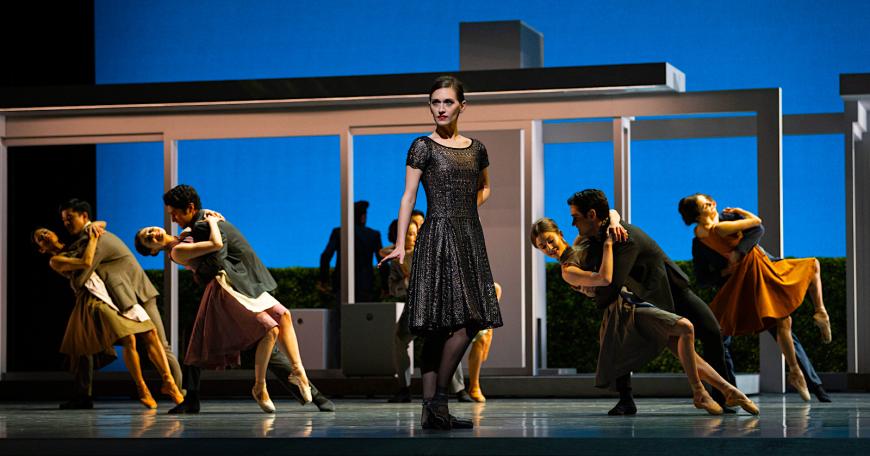
Van Patten, a principal dancer since 2007 — paired with the remarkable principal Joseph Walsh as Benjamin Braddock — was Mrs. Robinson. After intermission, just 20 minutes later, she became the lead ballerina in the second, Adagio segment of Balanchine’s Symphony in C, a gorgeous, plotless tutu ballet.
In both ballets, both made for a large cast, Van Patten was a central presence, dancing and eloquently acting two wildly diverse, enigmatic women. Choreographer Marston’s aggressive temptress, driven by a multitude of forces, societal and domestic, preceded Balanchine’s gently yielding ballerina.
Symphony in C’s Adagio movement is hallmarked by a steady stream of deep, supported arabesques, plunging and rising, only to plunge again, as her partner — here, the fine principal dancer Ulrik Birkkjaer — supports her into the climactic finale. He sweeps her nearly horizontal form into a circle until she reclines on the floor in his arms.
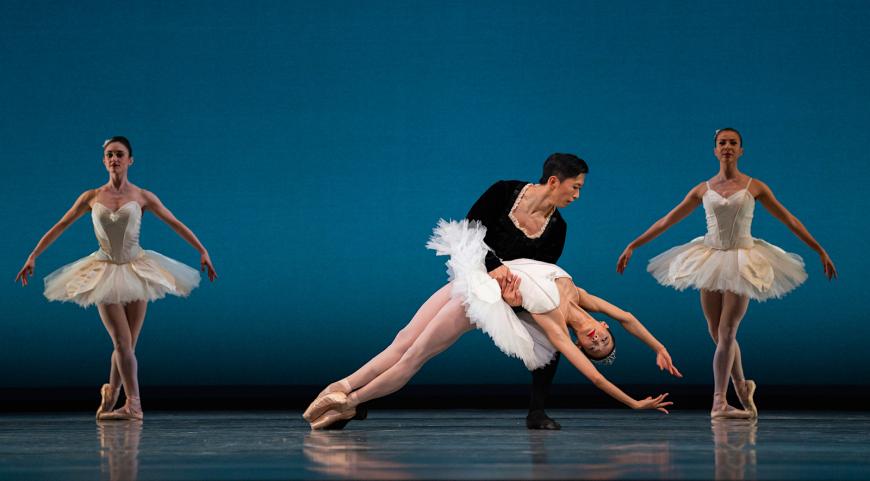
One of the “gifts” of Symphony in C’s plotlessness is that this ballerina role is wide open to flights of the imagination. You might see her as a princess yielding to her prince, or a captive swan disguised as a mortal, or as a woman in the grips of love — or maybe a fatal illness. No matter. It’s poetic, stunning, and daunting to dance.
The other three movements are no walk in the park either, especially after two years away from the stage, but the company rose to the occasion. It will take time to recapture the sense of breadth and buoyancy inherent in Balanchine, but the dancers, already secure in the choreography and so contagiously joyful at being back, are well on their way.
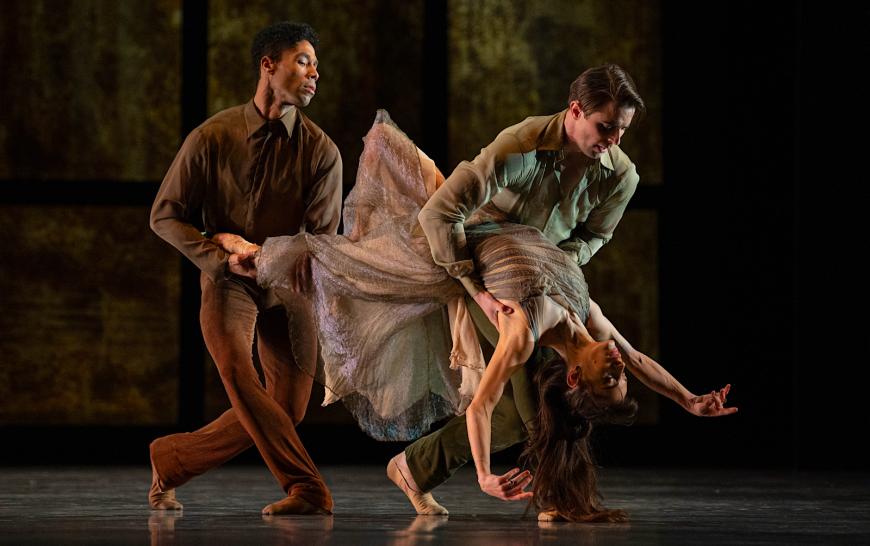
Tomasson’s 2011 Trio plays to all his company’s strengths — strong technique, musicality, warm emotiveness. The Tchaikovsky string sextet “Souvenir de Florence” ranges from allegro to adagio and its Russian character motifs in the final third and fourth dance movements were enchantingly spurred on by Misa Kuranaga and Angelo Greco’s blithe yet precise performances.
Marston captivated with her 2018 ballet Snowblind, based on Edith Wharton’s Ethan Frome. The ballet Mrs. Robinson, based on the Charles Webb 1963 novella The Graduate that led to the 1967 film, takes both sources (noting too that Betty Friedan’s The Feminine Mystique came out the same year as Webb’s book) and extends them. The music is not by Simon and Garfunkel as in the movie, but a jazz score by Terry Davies, fueled by a smoky, seductive clarinet. While the new ballet is eminently watchable, with superbly agile, emotive, and often witty results, the net result of the scenario, written by Marston with Edward Kemp, is a puzzle.
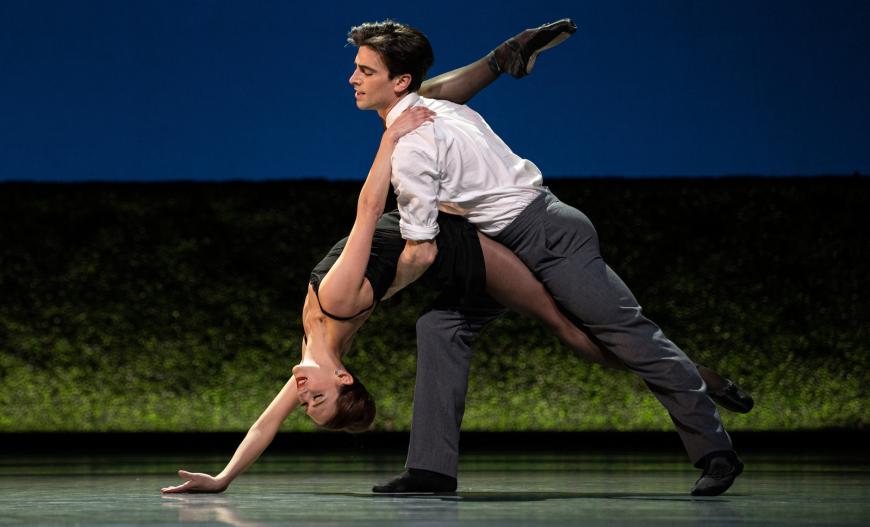
Mrs. Robinson seems to be two ballets. One — beautifully choreographed and deftly, delightfully played by Van Patten’s Mrs. Robinson — is her hot and supple, salty and sultry seduction of Benjamin Braddock, emanating from domestic boredom and untapped brilliance, more common in ’60s societies, perhaps, than today, but by no means nonexistent. We also see, and feel, Benjamin’s (Joseph Walsh) post-seduction hardening of spirit, as he realizes he’s been used, and now is using.
His salvation arrives — fatefully — in the form of the Robinsons’ daughter Elaine (Madison Keesler), apple of her indulgent daddy’s (Luke Ingham) eye, to the jealous displeasure of her mother, whom Mr. Robinson ignores and misreads. The burgeoning love of Benjamin and the sweet and beautiful Elaine leads to the end of Mrs. Robinson. To watch her dancing through this downfall, to see her body and countenance wither and collapse, is like looking into a pit. It’s Van Patten’s masterclass in character dance.
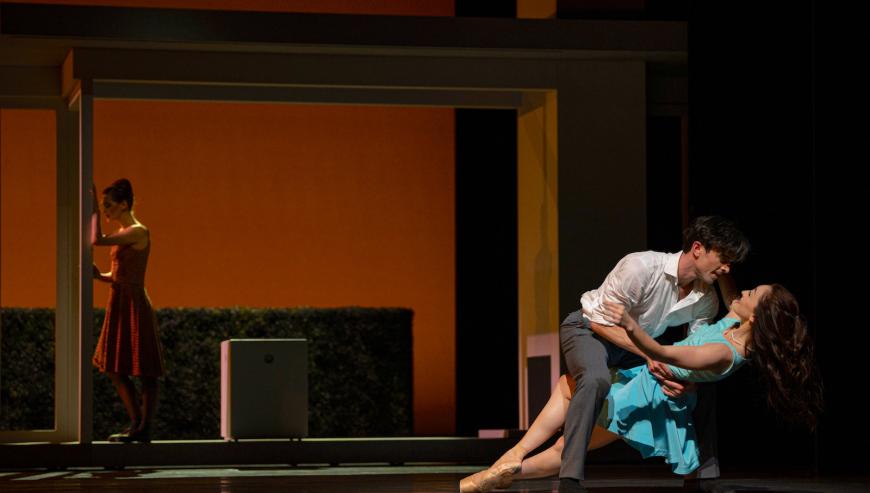
Ballet two, if you will, unfolds alternately with the story of Mrs. Robinson. It vividly depicts the culture of ’60s suburbia (marvelous set and costumes by Patrick Kinmonth), with the men going to the office and the women staying home to mix cakes, do laundry, dust, and so forth. (The synchronized chore-eography for the corps of wives in aprons is wonderfully wry.) Mrs. Robinson shares the stage, but other than an occasional walk with the aproned housewives, she is not part of that crowd. Her disconnection, it seems to this viewer, sinks the plot.
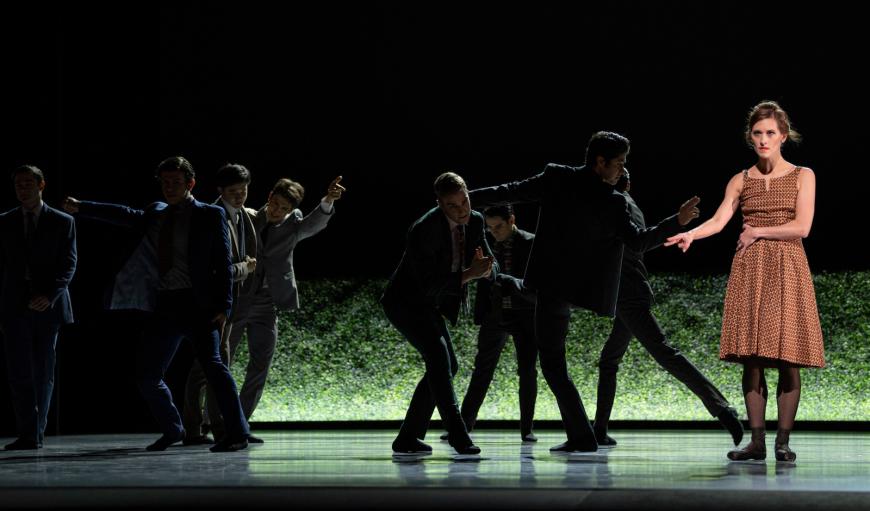
The guys get home from work, bolt their martinis, and play with their nine-irons and occasionally their wives. Defections begin. Slowly we realize that there are now only a couple of stalwart housewives marching around in lockstep. The others have crumpled to the ground under the weight of mindless drudgery. Soon, as the women all band together, marching out of their backyards, going beyond the boxwood hedge to seek new lives, we not only cheer, we await the result. But as we watch them, all we see are the women’s heads lined up in a row as they look back at us from behind the tall hedge, more shooting gallery than empowered new feminists. Ballet two has ended and the disconnect, sadly, is complete.
Can this ballet be saved? It should be.






